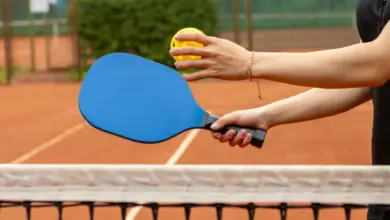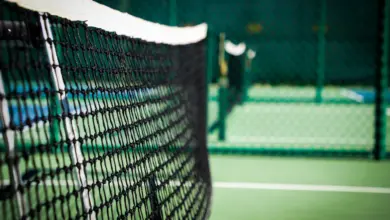Doubles Pickleball: Mastering the Third Shot – Drive or Drop?

Mastering the Essential Third Shot in Doubles Pickleball
In the world of doubles pickleball, understanding the significance of the third shot is vital for teams hoping to secure victories. This simple yet crucial aspect can determine the outcome of any rally. A well-executed third shot can pave the way for scoring points, while a poorly played one can quickly end the game. It’s essential to grasp the mechanics behind this shot, including two variations: the Third Shot Drop and the Third Shot Drive.
What is the Third Shot Drop?
The Third Shot Drop is executed following the return of serve. This particular shot is designed to gently land in the opponent’s Kitchen area. The primary goal is to restrict your opponents from launching an aggressive attack, allowing your team some breathing room to advance towards the net and reclaim control of the court. The finesse of this shot is essential; a good drop shot can help your team transition into a stronger position.
Understanding the Third Shot Drive
Contrary to the Third Shot Drop, the Third Shot Drive aims for a different outcome. It’s a powerful move taken right after the return of serve, intended to either set up an easy drop for the fifth shot or catch your opponents off guard to secure a swift point. The drive is a more aggressive approach and should be thoughtfully considered based on the game’s circumstances.
The Question of Preference: Drop vs. Drive
A common debate among players is which shot is superior: the drop or the drive. While some advocate for the drop as the ideal play, it’s more beneficial to focus on when each shot should be executed. The prevailing belief suggests that the third shot drop is often the best choice for the serving team since it increases their chances to get to the net. However, the key to success is understanding that the primary aim of the serving team is to accumulate points. A drop shot isn’t the only way to secure that goal, even though it’s a reliable strategy. It’s essential to recognize that while the third shot drop serves as a safe option, there are moments where a drive may yield better results.
Professional Insights: Frequency of Drops and Drives
After analyzing over 250 doubles matches in prestigious gold medal rounds at APP Open Tournaments, I noted how frequently players utilized the drop versus the drive for their third shot. The statistics revealed an interesting trend. While the third shot drop was indeed the more common choice, the drive was used more often at the professional level than many anticipate—about 34% of the time. This finding reinforces the idea that while drop shots are fundamental, there are also strategic opportunities when driving the ball proves advantageous.
But what about the results? Tracking how rallies ended revealed that third shot drives often converted into points at a higher rate than drop shots. This data suggests that drives can be a powerful tool when orchestrated at the right moments. However, it’s critical not to misinterpret these statistics as a green light to drive every time. Choosing to drive impulsively without gauging the situation can lead to unnecessary errors.
When to Choose a Drive
Opting for a drive should always be strategic. The drive isn’t just another shot but a way to set up future plays. Great players will retaliate if they receive a weak drive, so it’s crucial not to expect a drive to result in an instant point. Instead, they should serve as a segue to an advantageous shot for your partner or create space for a favorable drop.
For example, consider a situation from a professional match where the return of serve is high and shallow, landing in the midcourt area. This presents a golden opportunity to drive the ball effectively. Another instance could be during the Women’s doubles Gold Match at the APP Hilton Head Open Pro, where a player drove the ball after a deep yet soft return. This didn’t result in an immediate point but appropriately set up a subsequent drop.
Knowing when to drive the ball can be nuanced. Here are a few scenarios where driving can be beneficial:
– If one opponent stays back, drive the ball in their direction to keep them on the defensive.
– When opponents are misaligned, directing the ball down the line can exploit their positioning.
– If one player consistently struggles with drives, capitalize on that weakness every so often.
Yet, it’s important to acknowledge personal skills. If your driving ability is not strong, then more conservative shots like drops might serve you better in those situations.
When to Avoid Driving
It’s essential to recognize moments when driving the third shot can be more harmful than helpful. Engaging in drives when positioned deep in the backcourt or behind the baseline often leads to setbacks. In these cases, opponents will likely have ample time to respond, making your transition to the net difficult.
Consider a scenario where a player attempts to drive the ball from well behind the baseline. This often results in limited movement toward the net, leaving ample opportunity for the opponent to react and take control. Players need to craftily assess their distance from the net when deciding between a drive or a drop.
Nailing the Third Shot Drop Strategy
When driving isn’t the right move, the third shot drop comes into play. Here are some practical strategies to help perfect your drops:
1. Be meticulous with placement. Aim for the sidelines to push your opponent into making challenging cross-court shots, leading to easier returns for your side.
2. Channel forward momentum. It’s vital to use your body’s movement when executing this drop. Motioning forward enhances your accuracy and positioning after the shot.
3. Stay behind the baseline after serving! Many players step inside right after serving, which can set them back when it’s time to execute the third shot. The momentum from the serve can lead to an undesirable position. Remaining behind the baseline allows for a smoother approach to performing the drop shot effectively.
Visualize a player who steps too close after serving. A deep return catches them awkwardly, forcing them to make a challenging shot while moving backward. This situation can leave the opposing team ready to capitalize on any openings. Staying behind the baseline fosters a favorable angle for executing a drop that sets the stage for the next move.
Final Thoughts on Shot Selection
The third shot drop is generally the go-to choice for players, but that shouldn’t discourage you from seizing opportunities for effective drives. Both types of shots have crucial roles, and the most successful teams will know how to employ each one in their favor. Mastery of these two shots will enhance your gameplay and improve your chances of winning those critical rallies.


